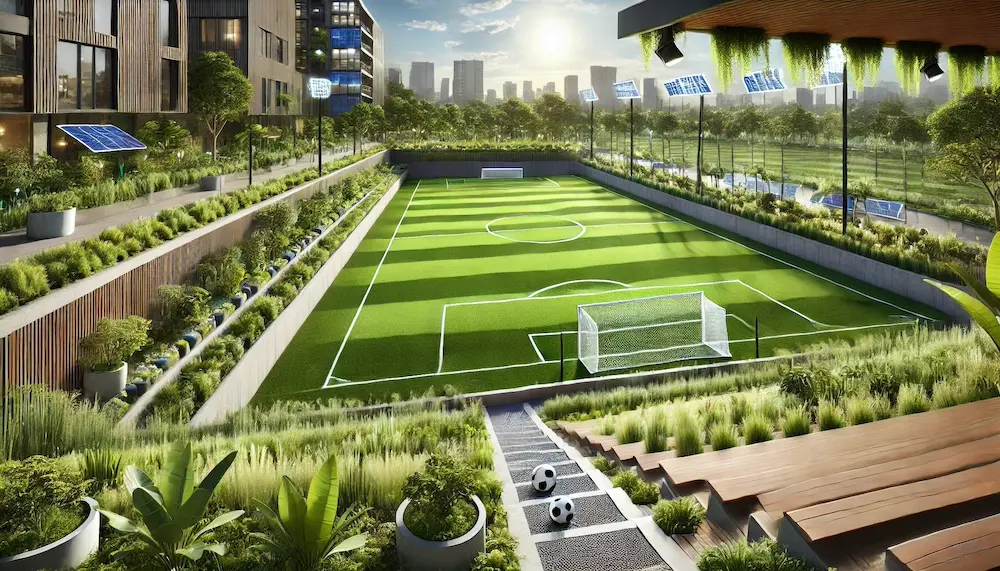Eco-friendly soccer fields are designed to minimize environmental impact while providing high-quality playing surfaces. This article explores their key features, benefits, challenges, applications, and considerations for implementation.
Introduction to Eco-Friendly Soccer Fields
Eco-friendly soccer fields incorporate sustainable practices in their design, construction, and maintenance to reduce carbon footprints, conserve resources, and promote biodiversity. These fields aim to balance athletic performance with environmental responsibility.
Key Features of Eco-Friendly Soccer Fields
- Sustainable Materials: Utilizing recycled or renewable materials, such as wood or recycled plastics, in construction. For instance, Forest Green Rovers’ proposed Eco Park stadium is planned to be constructed almost entirely of wood, aiming to be the world’s first all-timber stadium.
- Renewable Energy Integration: Incorporating solar panels or wind turbines to power stadium facilities. The Mercedes-Benz Stadium in Atlanta, for example, is equipped with 4,000 rooftop solar panels, contributing to its energy efficiency.
- Water Conservation Systems: Implementing rainwater harvesting and efficient irrigation systems to reduce water usage. Some stadiums collect and store rainwater to irrigate the pitch during drier periods.
- Natural Landscaping: Planting native vegetation around the field to support local ecosystems and enhance biodiversity. The New Lawn stadium, home to Forest Green Rovers, has developed areas outside the stadium into habitats for wildlife through the planting of wildflowers and native trees.
Benefits of Eco-Friendly Soccer Fields
- Environmental Impact Reduction: Lower greenhouse gas emissions and resource consumption contribute to a healthier planet.
- Operational Cost Savings: Energy-efficient systems and water conservation can lead to long-term financial savings.
- Community Engagement: Demonstrating environmental responsibility can enhance community support and involvement.
Challenges of Eco-Friendly Soccer Fields
- Initial Investment: The upfront costs for sustainable technologies and materials can be higher than traditional options.
- Maintenance Expertise: Specialized knowledge may be required to maintain eco-friendly systems effectively.
- Regulatory Compliance: Navigating building codes and environmental regulations can be complex.
Applications of Eco-Friendly Soccer Fields
- Professional Stadiums: Many top-tier clubs are adopting sustainable practices to lead by example. For instance, the Allianz Riviera in Nice is known for its eco-friendly design, including photovoltaic coverage and three-dimensional lamellar wood structures.
- Community and Educational Facilities: Local fields and school sports grounds can implement eco-friendly features to promote sustainability at the grassroots level.
Considerations for Implementation
- Site Assessment: Evaluate the local environment to determine the most effective sustainable practices.
- Stakeholder Involvement: Engage with the community, players, and sponsors to support eco-friendly initiatives.
- Long-Term Planning: Consider the lifecycle of materials and systems to ensure enduring sustainability.
Conclusion
Eco-friendly soccer fields represent a significant step toward sustainable sports infrastructure. By integrating environmentally responsible practices, these fields not only reduce ecological impact but also inspire communities to value and engage in sustainability efforts.
